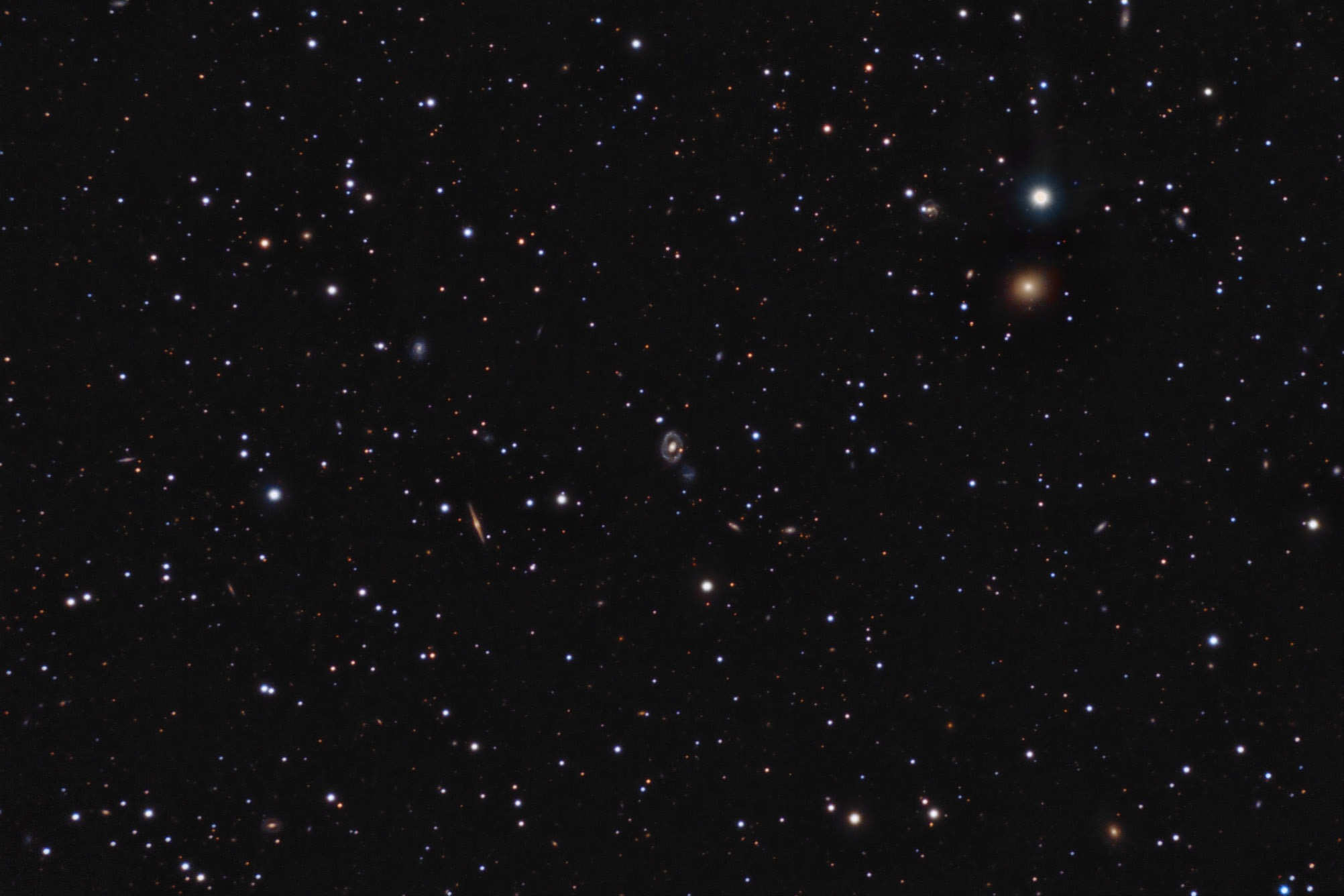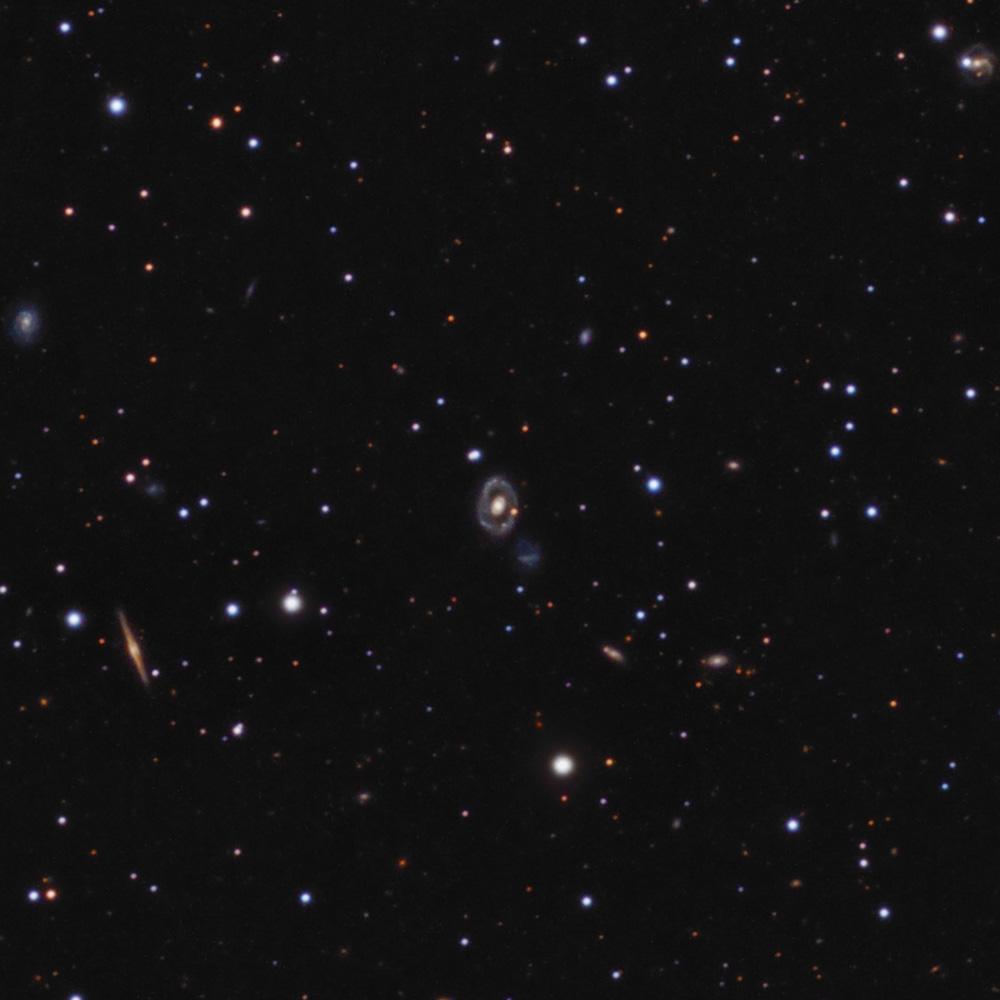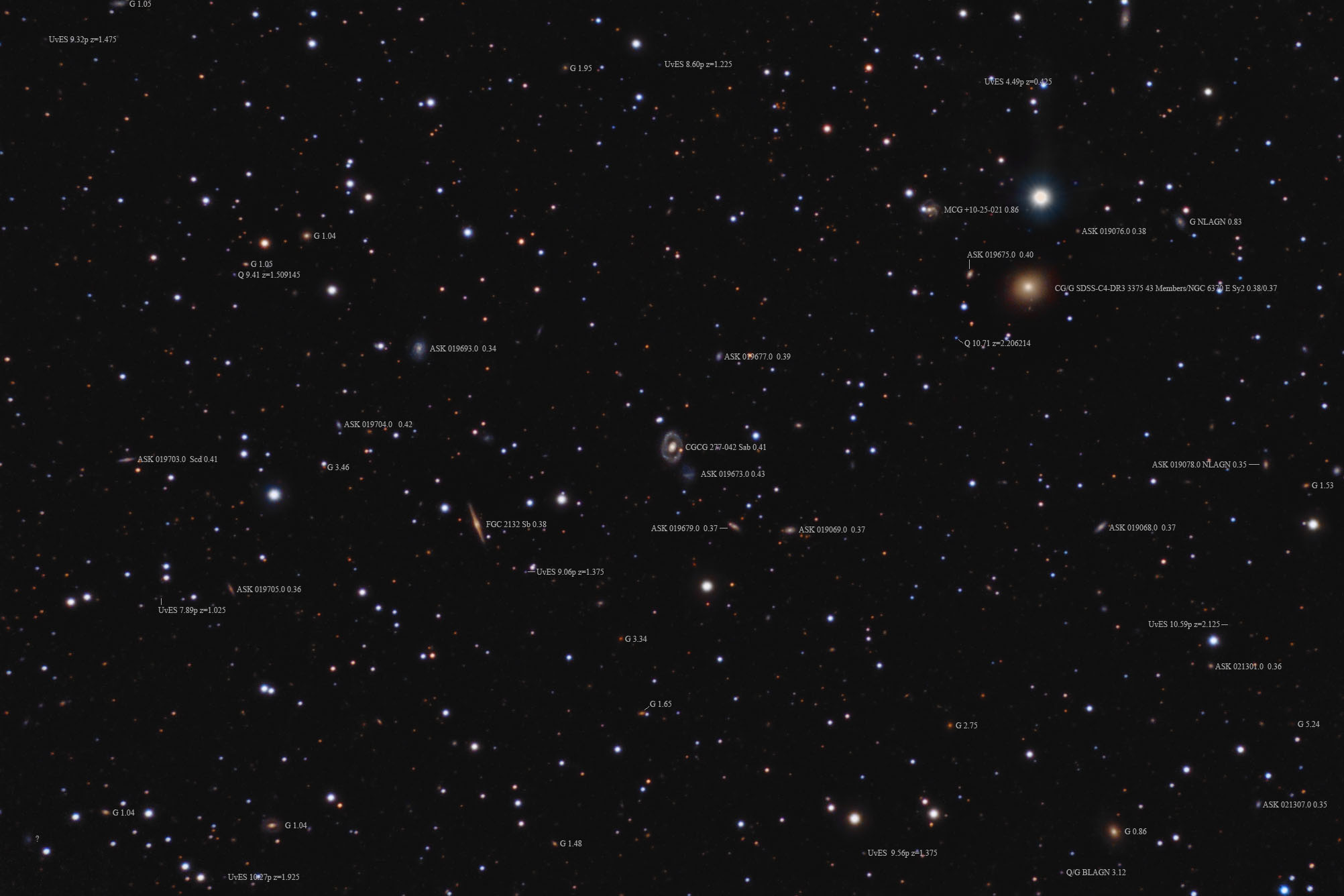| Description | Images |
Object name: PGC60230Designation(s): PGC60230, NGC6370, PGC 60230/CGCG 277-042 is a neat ring galaxy near the head of Draco about 41 million light-years distant by redshift measurement. It may be part of the SDSS-C4-DR3 3375 galaxy cluster which is anchored by NGC 6370, an elliptical galaxy in the upper right of my image below a nasty A2 blue star. Right beside CGCG 277-042 is a very low surface brightness messed up looking blue galaxy ASK 019673. Since rings of the type found here are sometimes considered caused by galaxy collisions I had hoped to find information on this pair. Unfortunately, I found virtually nothing. In fact, there are only 3 papers listed at SIMBAD on CGCG 277-042 and none on the companion. Of the three two are just a catalog entry and another providing better coordinates. The third is a study of this type of ring galaxies to try and find a way to separate those created by collision from other causes. CGCG 277-042 was one in the study but that's all. No findings on it at all other than it likely fits their expected conditions. http://cdsads.u-strasbg.fr/cgi-bin/nph-bib_query?2010MNRAS.403.1516S&db_key=AST&nosetcookie=1 Both of these could easily have made Arp's Atlas. He had a category for ring galaxies though it contains only 3, none of which have the core in the center. ASK 019673 at first glance looks a lot like Arp 338, the last one in his atlas. Though it is quite likely two superimposed galaxies, one face on and one edge on as both show a golden core which was lost in Arp's black and white image. It is also a red spiral. ASK 019673 looks to be a single galaxy and is very blue. To me ASK 019673 is the type of galaxy he apparently incorrectly thought he had in #338. Related Designation(s):1RXS J172324.0+565840, 2MASS J17232520+5658284, 2MASS J17243081+5654348, 2MASX J17232515+5658281, 2MASX J17243082+5654350, CGCG 1722.5+5702, CGCG 1723.6+5656, CGCG 277-042, CGCG 300-021, CGCG 300-023, LDCE 1248 NED003, LQAC 260+056 011, MCG +09-28-045, MCG +10-25-020, Mr18:[BFW2006] 01127 NED05, Mr19:[BFW2006] 02280 NED03, NGC 6370, NGC6370, NSA 004569, NSA 147963, NVSS J172325+565831, PGC 060192, PGC 060230, PGC60230, RX J1723.4+5658:[ZEH2003] 02 , RXC J1723.3+5658, SDSS J172430.81+565434.9, SDSS J172430.82+565434.9, SDSS J172430.82+565435.0, SDSS J172430.82+565435.1, UGC 10836, UZC J172325.3+565830, UZC J172430.9+565435, [BFW2006] J261.12841+56.90977 , [S2010] J172430.82+565434.9, [VCV2001] J172325.4+565827, [VCV2006] J172325.4+565827, | Permanent link: https://images.mantrapskies.com/catalog/OTHER/PGC60230-NGC6370/PGC60230L5X10RGB2X10.JPG |


